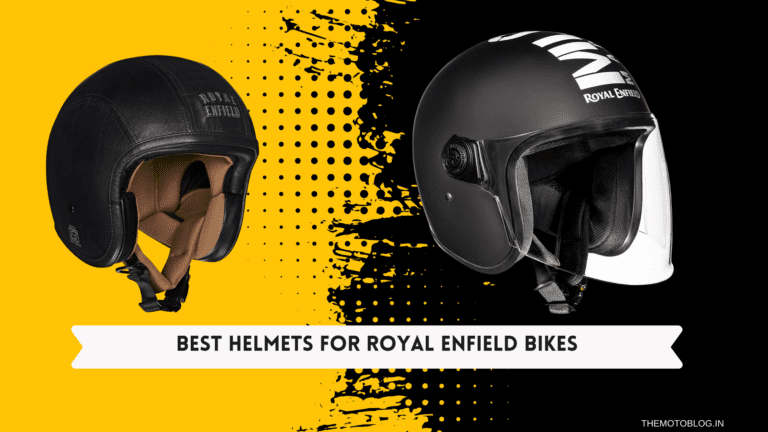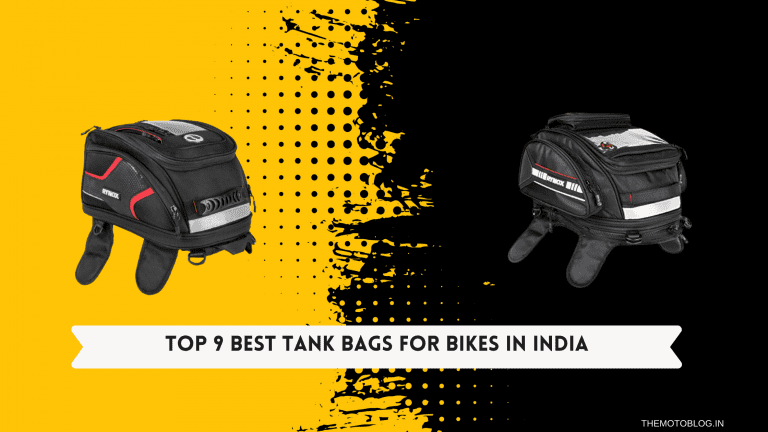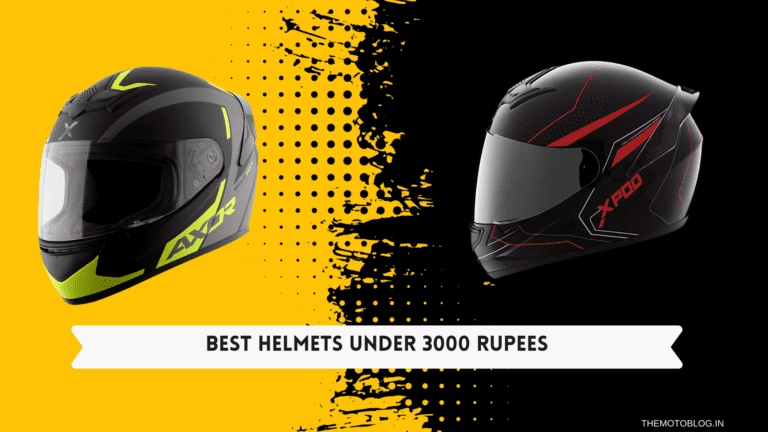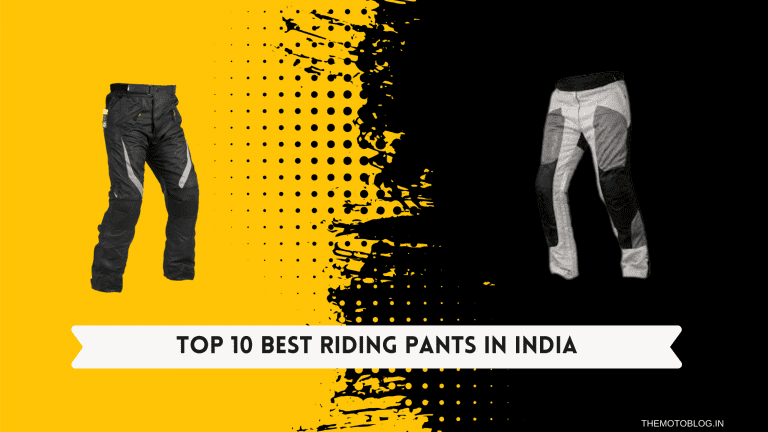How to properly care for your Bike Riding Gear: Essential Maintenance Tips
Taking good care of my bike riding gear is essential to ensure its longevity and maintain my safety when out on the road. With a consistent maintenance routine, I can keep my gear in pristine condition, making it more effective at protecting me from potential accidents and harsh weather conditions. In this article, I’ll share some useful tips on proper care for your motorcycle gear.
Firstly, it’s important to regularly inspect and clean the various elements of your bike riding gear. Helmets, gloves, boots, and protective clothing should be given due attention. By keeping them clean, I not only maintain their appearance, but I also reduce the risk of wear and tear that can compromise their effectiveness in the long run.
Finally, it’s essential to store my bike riding gear correctly, preventing any damage or contamination. By investing time in proper care, I can ensure my gear remains in top-notch condition and continues to offer optimal protection for years to come. Stay tuned, as I’ll dive deeper into the best methods for maintaining each essential piece of motorcycle gear.
Understanding Your Bike Riding Gear
I’ve completed several biking trips, including solo adventures and group rides, relying on my Rynox Storm Evo riding pants and jackets, Rynox Air GT gloves, and various luggage solutions. In my experience, understanding the different components of your gear is crucial for its overall upkeep.
Bike helmets are perhaps the most critical piece of riding gear you can invest in. There are different types of helmets in India, each offering varying levels of protection. Helmets come with various safety ratings, and it’s essential to choose one with adequate certifications.
Next, we have riding jackets and pants. These not only provide comfort and protection from the elements but also come with features like padding and armour for additional safety. Remember that when choosing a jacket, it’s advisable to go one size smaller than your usual shirt or t-shirt size for a snug fit.
Protective gloves, like the Rynox Air GT Gloves I use, offer shield and comfort whilst operating the controls on your bike. Gloves can have added features such as knuckle guards and reinforcements to provide additional protection.
Riding boots are an essential component of bike gear as well. They can prevent foot and ankle injuries, and their unique design provides the necessary support and stability.
Lastly, consider your bike’s luggage solutions. From saddlebags and tail bags to tank bags and panniers, finding the right storage system can make your ride more enjoyable and stress-free. While on the road, be sure to use appropriate gadgets and accessories such as a mobile holder with charger to keep your phone accessible and charged.
In conclusion, understanding each component of your bike riding gear will ensure proper care, ultimately prolonging its lifespan and keeping you safe during your biking escapades.
Cleaning Your Motorcycle Helmet
The motorcycle helmet is an integral piece of equipment that often requires meticulous attention. Here, I’ll walk you through the steps to clean your helmet, ensuring it remains in peak condition.
First, gather the necessary cleaning materials, including:
- Mild soap: Avoid using harsh chemicals which may be damaging
- Soft cloth: A microfiber cloth is ideal
- Warm water: Not too hot to avoid damaging the helmet materials
- Brush with gentle bristles: If needed, for stubborn dirt
- A properly ventilated area: After washing, your helmet will need to air dry
Now that you’re prepared with the right materials follow these simple steps to clean your helmet:
- Remove any accessories: If your helmet has a visor or other removable parts, detach them carefully to avoid breakage.
- Rinse the exterior: Using a soft cloth, damp with warm water, gently remove loose dirt and debris. For stubborn grime, use a gentle brush and mild soap.
- Wash the padding: If your helmet has removable inner padding, take it out and follow the manufacturer’s instructions for washing. Often, hand washing with mild soap and warm water is recommended.
- Clean the interior: Using a soft cloth and a solution of mild soap and warm water, carefully clean the helmet’s interior, removing oils, sweat and any built-up dirt.
- Rinse thoroughly: Rinse the shell and padding with warm water, ensuring all soap residue is gone.
- Let it air dry: Once you’ve rinsed the helmet, allow it to air dry thoroughly in a well-ventilated area. It’s important not to use any heat sources, as this may damage the helmet’s materials.
Remember, taking care of your motorcycle gear doesn’t end with just cleaning. Regularly inspect your helmet for any cracks or damage, as this may compromise its protective abilities. Always replace your helmet if you suspect its integrity has been compromised or after any significant impact. A well-maintained helmet ensures its helmet safety ratings remain valid.
Maintaining Your Riding Jacket
One of the essential items within this gear is the riding jacket. I’ll share some tips on how to maintain riding jackets for peak performance and long-lasting durability.
First and foremost, it’s crucial to clean your riding jacket regularly. This can be done by following the manufacturer’s instructions. For textile jackets, gentle hand washing with a mild soap and water should suffice, while leather jackets may require specialist cleaning products. Remember to avoid using harsh detergents, as they may damage the jacket’s materials.
Additionally, it’s important to check for signs of wear and tear. Examining your jacket regularly helps in spotting any scuffs, tears or damaged seams, which requires prompt attention to prevent further deterioration. Damaged parts should be repaired or replaced, depending on the severity.
To keep your riding jacket in good shape, store it properly when not in use. It’s best to hang it on a coat hanger in a dry, well-ventilated area, away from direct sunlight. This practice helps the jacket maintain its shape and prevents unnecessary creasing or damage from moisture.
Another useful tip for maintaining your riding jacket is to treat the zippers and fasteners with care. It’s important to keep them clean, lubricated and free of debris. Lubricating the zippers occasionally with a silicone spray ensures smooth operation and prolongs their life.
Finally, remember to replace your riding jacket when necessary. Like any other bike riding gear, your jacket will eventually wear out or become less effective.
From my experience and expertise, proper maintenance contributes significantly to the lifespan of your riding jacket. While on my numerous rides, my Rynox Storm Evo Riding Pants and Jackets have served me well for several years. For instance, you can take some advice on why you should choose a riding jacket one size smaller than your shirt or t-shirt size to get the perfect fit.
Looking After Your Riding Trousers
Proper maintenance for riding trousers specifically should not be overlooked. Here’s how to look after your riding trousers effectively.
Firstly, it’s important to clean and inspect your riding trousers regularly. To preserve their condition, gently wipe them down using a damp cloth, avoiding any abrasive materials. Be sure to check for tears or damaged areas, and address them as needed.
Another key aspect to consider is storage. When your riding trousers aren’t in use, keep them in a cool, dry place, away from direct sunlight. Exposure to intense heat and UV rays can damage the fabric over time, reducing the trousers’ effectiveness and lifespan.
In addition to cleaning and storage, your riding trousers may require occasional repairs or replacement. Pay attention to any zippers, seams, or Velcro fastenings issues, and fix them as soon as possible. Having proper equipment is crucial, and so is the way you take care of it. By following these guidelines, you’ll be able to keep your riding trousers in excellent condition for many miles to come.
Proper Boot Care for Longevity
A crucial part of your gear is your riding boots.
Firstly, it’s essential to clean your boots after every ride. Dirt, mud, and water can cause your boots to wear out faster. Use a soft brush to clean off dirt and debris. For a more thorough clean, dampen a cloth with warm water and mild soap, gently wiping down the boots. Don’t forget to clean the soles and remove any caked-on mud.
For the interior of your boots, it’s vital to keep them odour-free and fresh. An effective way to do this is by removing the insoles and airing them out after each ride. Using a footwear odour eliminator spray can also help to neutralise any unpleasant smells.
Drying your boots should be done as soon as possible after cleaning or when they get wet. Avoid using direct heat sources, such as radiators or hairdryers, as these can weaken the materials and cause them to crack. Instead, let them air dry in a well-ventilated area away from direct sunlight.
Regular maintenance is key to making your boots last longer. Applying a leather conditioner or protectant for synthetic boots will help to keep the material supple and less prone to cracking. Periodically check your boots for any signs of wear or damage and address these issues promptly. You can find more information on the importance of wearing motorcycle boots on our website.
Some additional care tips include:
- Keep the boots away from oil, petrol, or any harsh chemicals, as they can damage the materials or cause the colours to fade.
- Avoid prolonged exposure to sunlight, as it can break down the materials and decrease their lifespan.
- If your boots have removable buckles or parts, take the time to clean and maintain them as well.
Storing Your Gear for Maximum Lifespan
It’s essential to store your gear in the right conditions and follow the best maintenance practices. I’ve managed to get my gear to last a long time throughout my biking adventures, including my trips to Ladakh, Spiti, Zanskar, Dhanushkodi, Karnataka Coastel, and Malenadu.
One critical aspect of gear care is cleaning. Be sure to wash your gear regularly, especially after long rides, to remove dirt and sweat. Jackets and pants should be hand-washed or gently machine-washed using a mild detergent. Air-drying is best, as it prevents damage caused by high heat. When washing gloves, a gentle scrub is sufficient. It’s also vital to properly dry your boots.
Once you’ve cleaned your gear, consider the storage environment. Humidity and exposure to direct sunlight can deteriorate the materials in your bike riding gear. Keep your gear in a cool, dry place away from direct sunlight to prevent fading and avoid damp areas to prevent mould or mildew growth. Here are some helpful tips for storing each type of gear:
- Helmets: Store helmets on a helmet stand or shelf, away from extreme temperatures or direct sunlight. Don’t hang or store them by the chinstrap, as it can compromise the strap’s integrity.
- Jackets and Pants: Make sure your jackets and pants are clean and completely dry before storage. Hang them on padded hangers to maintain their shape. Proper fit is critical for safety.
- Gloves: After cleaning, gently reshape gloves and allow them to air-dry completely. Once dry, store them in a cool, dry place—ideally in a protective bag or container.
- Boots: Dry your boots thoroughly and store them upright in a dedicated boot storage rack or shelf. Avoid using heat sources like radiators or hairdryers to dry them, as it may cause damage.
Additionally, you can use silica gel packets to absorb excess moisture when storing your gear. Place a few packets inside gloves, boots, and helmet cavities to prevent dampness.
Luggage storage is also an important aspect of gear care. I’ve used Rynox Expedition Saddle Bags, Rynox Expedition Tail Bag, and Rynox Magnapod Tankbag and recently switched to Royal Enfield Panniers for added convenience. Checking and maintaining these storage solutions can ensure they last long and protect your belongings during rides.
Tips on Drying Motorcycle Gear
One crucial aspect of caring for your equipment is drying it correctly after it gets wet. Here are some effective tips on how to dry your motorcycle gear properly:
When it comes to drying your bike riding gear, it’s important to avoid direct sunlight, as the UV rays can damage the materials. Instead, find a shaded outdoor spot or a well-ventilated indoor area to dry your gear. By doing this, you’ll ensure the integrity and durability of your equipment.
To facilitate the drying process, removing any removable protective armour and padding inside your riding gear is best. Set up a drying rack, hanging your gear to allow for maximum air circulation. Be sure to fasten any Velcro straps, zips, and closures so that the gear retains its shape while drying.
Stay away from using direct heat sources such as radiators, hairdryers, or tumble dryers. Excessive heat can cause the materials to shrink or become damaged, hurting their effectiveness and your safety on the road. Consider using a fan or dehumidifier in the room to speed up the drying process even further. This method is particularly useful in humid environments where it takes longer for your gear to dry naturally.
It’s important to be patient when drying your motorcycle gear. Rushing the process can lead to your gear not drying properly, which could negatively impact its performance and longevity.
Here’s a summary of the steps involved in properly drying your motorcycle gear:
- Dry in a shaded or well-ventilated area
- Remove any replaceable armour or padding
- Hang the gear on a drying rack, fastening straps or closures
- Avoid heat sources to prevent damage to the materials
- Use a fan or dehumidifier to speed up drying if needed
Essential Gear Maintenance Kit
The essential gear maintenance kit should include the following:
- Mild detergent: A gentle detergent is necessary to wash your riding gear without damaging the fabric or affecting its functionality. Avoid using harsh chemicals or bleach.
- Soft-bristle brush: This type of brush will allow you to clean the gear without scratching or damaging the material.
- Waterproof spray: A waterproof spray could be added to your maintenance routine to maintain your gear’s water resistance, especially if it’s exposed to rain. Ensure that the spray is compatible with your gear’s specific fabric.
- Cloth and microfibre towel: A soft cloth and microfibre towel are useful for wiping down your gear, removing dirt and moisture without causing damage.
- Silicone lubricant: Lubricating your gear’s zippers and other metal parts can keep them in optimal condition and prevent rusting or jamming.
- Leather conditioner: If you have leather gear, like boots, a leather conditioner can help maintain the suppleness and durability of the material.
Bear in mind that some gear may require specific maintenance products, so always check the manufacturer’s instructions for proper care. Also, it’s essential to clean and maintain your equipment regularly so it stays in top shape, ready to protect you during your rides.
Taking care of your bike riding gear is just as important as maintaining your motorcycle itself. With the essential gear maintenance kit and diligent attention to your gear, you’ll be well-prepared for all your two-wheeled adventures, whether it’s tackling treacherous terrains or embarking on long-distance touring rides, securing a great experience on routes like those I’ve completed in the past on my bike.
FAQ
Is it necessary to use specialized cleaners for my bike riding gear?
While Using Specialized Cleaners Can Offer Better Results And Protect The Gear’s Material, It Is Not Always Necessary. Mild Detergents And Soaps Can Effectively Clean Most Bike Riding Gear Without Causing Damage.
How do I store my bike riding gear when not in use?
Store Your Bike Riding Gear In A Cool, Dry, And Well-Ventilated Area, Away From Direct Sunlight Or Extreme Temperatures. It Is Best To Hang Items Like Jackets And Pants To Maintain Their Shape And Prevent Creasing. For Helmets, Store Them In A Helmet Bag Or On A Dedicated Helmet Shelf To Protect Them From Dust And Accidental Damage.
How do I know when it’s time to replace certain parts of my bike riding gear?
Some common signs that it may be time to replace certain parts include:
1.Helmet: Cracks, loose padding, or any signs of impact damage
2.Gloves: Worn or frayed fabric, loss of grip, or damaged padding
3.Jacket and pants: Fading, torn seams or fabric, damaged padding or armor, non-functional zippers or closures
4.Boots: Worn soles, cracking or separation of materials, damaged or non-functional buckles
Can I machine wash my bike riding gear?
Some Bike Riding Gear, Such As Clothing And Removable Padding, Can Be Machine Washed On A Gentle Cycle Using Mild Detergent. However, Always Check The Manufacturer’s Care Instructions For Each Specific Item Before Machine Washing. Helmets, Gloves, And Boots Should Be Hand-Washed To Avoid Damage.
How Can You Maintain The Proper Air Pressure In Your Bike Tires?
Check Your Bike Tire Pressure Regularly Using A Tire Pressure Gauge. Refer To The Manufacturer’s Recommended Tire Pressure Range, Located On The Side Of The Tire Or In The Bike’s Manual, And Inflate Or Deflate The Tires Accordingly.
Conclusion: Keep Your Gear in Prime Condition
By maintaining your equipment, you’ll look great on your rides and feel confident knowing you’re protected on the road.
I’ve completed numerous routes, including Ladakh, Spiti, Zanskar, Dhanushkodi, Karnataka Coastel and Malenadu using my Rynox Storm Evo Riding Pants and Jackets along with Rynox Air GT Gloves. Additionally, I have participated in group rides like Rider Mania 2022 with De Offroaders Hyderabad Group. All experiences have taught me the importance of proper care for my motorcycle gear.
Here are some key tips for keeping your gear in prime condition:
- Perform regular inspections of your gear, checking for any signs of wear and tear, such as frayed seams or loose zippers. Replace any items that show significant signs of wear.
- Always keep your helmet clean and free from damage. Maintaining this essential piece of safety equipment in top shape is crucial. Read more about different helmet types (Types of Helmets in India)
- Wash your gear according to manufacturer instructions. However, avoid using harsh detergents or bleach, as they can cause irreparable damage to materials. Ensure your gear is completely dry before storing it.
- Store your gear in a cool, dry place to help maintain its integrity and quality. Make sure it’s protected from direct sunlight or exposure to excessive moisture.
Investing in high-quality bike riding gear contributes to better comfort and safety during your rides. But practising proper care and maintenance is essential to maximize their lifespan. By following the tips mentioned above, you’ll be well on your way to enjoying your equipment for many more rides to come.
If you liked this article, then please subscribe to our YouTube Channel for more Bike Videos. You can also find us on Instagram, Twitter and Facebook.
Disclosure: As an Amazon Associate, I earn from qualifying purchases. Read more about Amazon Affiliate Disclaimer.
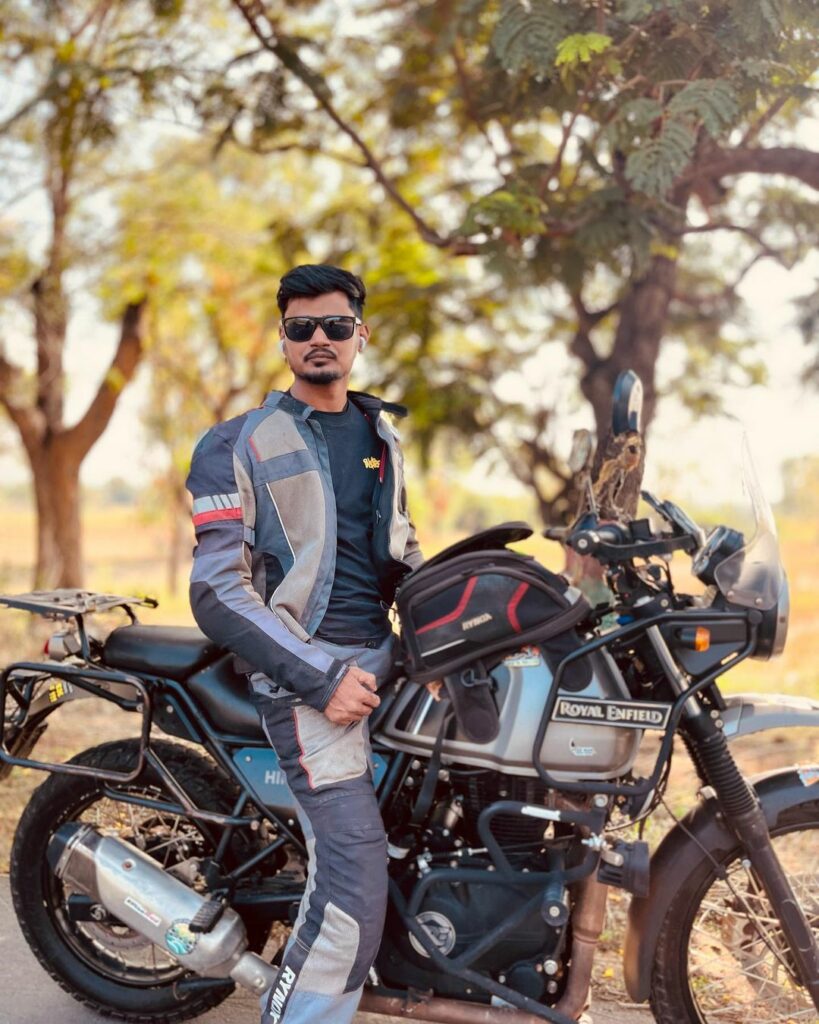
Vishwanath Mathpati
I am Vishwanath Mathpati, a full-time Blogger and Motorcyclist from Bidar, Karnataka. I love writing about my Motorcycles Stories and Riding Gears on this blog.
Know More About Me.


